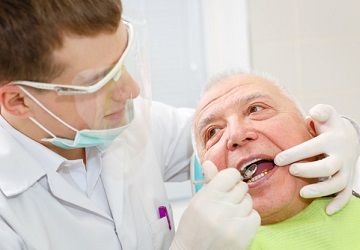Options for Expanding Dental Care Access for Senior Citizens
An article in the most recent issue of Health Affairs explores two options for expanding access to oral health care for senior citizens: expanding coverage under Medicare and the virtual dental home model.

An article in the most recent issue of Health Affairs explores methods of delivering better oral health care to a traditionally underserved portion of the population — senior citizens.
The article, titled “Seeking Dental Care for Older Americans,” explores two options: expanding dental coverage under Medicare and changing how care is delivered via the virtual dental home model.
Advocates for expanding Medicare to include more dental coverage have taken the approach of pointing out the oral health, whole-body health connection, the article says. Traditionally, the government has seen a cavity as simply “a hole in the tooth,” the article notes, but it’s actually a bacterial infection that can have severe health complications in geriatric patients. If that bacterial infection spreads from the mouth to the bloodstream, a cavity can become a serious, potentially antibiotic-resistant infection.
Similarly, the article notes, seniors tend to take multiple medications, such as cancer and rheumatoid arthritis medications. Both can suppress the immune system, meaning a cavity can spiral into a much larger health issue.
Currently, Medicare only offers dental coverage in a few instances, the article says, such as “prior to a kidney transplant to rule out any problems that might complicate the outcome,” or “medically necessary” dental care. This can include “services related to surgery on the jaw or other covered procedure, and tooth extraction in preparation for radiation treatment for cancers of the jaw.”
Medicaid, the article notes, isn’t much more helpful either. Not all Medicare beneficiaries qualify, the article says, and even if seniors do, their state might not offer dental coverage. In 2015, only 18 states offered dental coverage, the article says. These states “provided coverage only for emergency extractions.” Thirty-three states “provided one or more services including preventive, restorative or periodontal care.”
If amending Medicare to include dental coverage isn’t a viable option, the article says, perhaps relying on unconventional methods of delivering dental care is. The article highlights the success of the Virtual Dental Home Project, which is administered by the University of the Pacific in San Francisco.
Using this care model, hygienists will visit senior patients in nursing homes where they’ll use portable diagnostic and telemedicine tools. After conducting an examination, cleanings and some basic interventions, the hygienists will send diagnostic information to a dentist to review.
This method would require states to legislate what services hygienists can provide. In California, they are able to decide on appropriate X rays and “provide interim therapeutic restorations to address small cavities without local anesthesia in consultation with a dentist.”
ACTIVA BioACTIVE Bulk Flow Marks Pulpdent’s First Major Product Release in 4 Years
December 12th 2024Next-generation bulk-fill dental restorative raises the standard of care for bulk-fill procedures by providing natural remineralization support, while also overcoming current bulk-fill limitations.